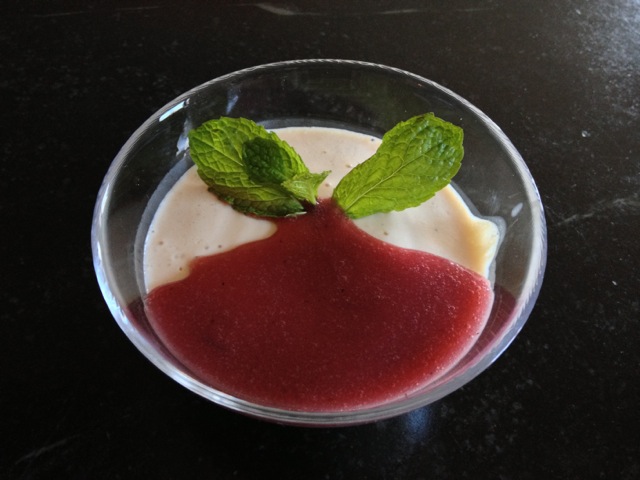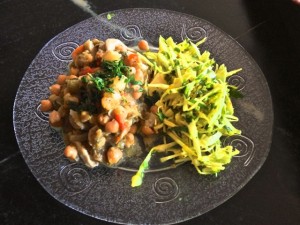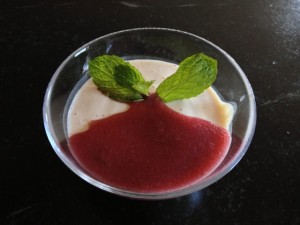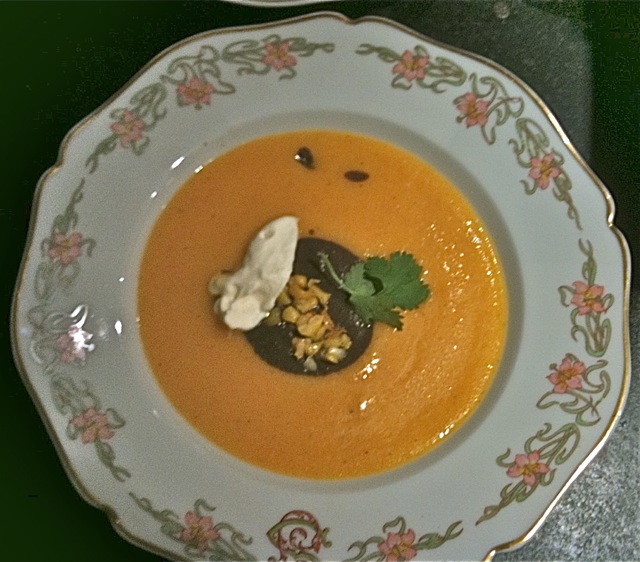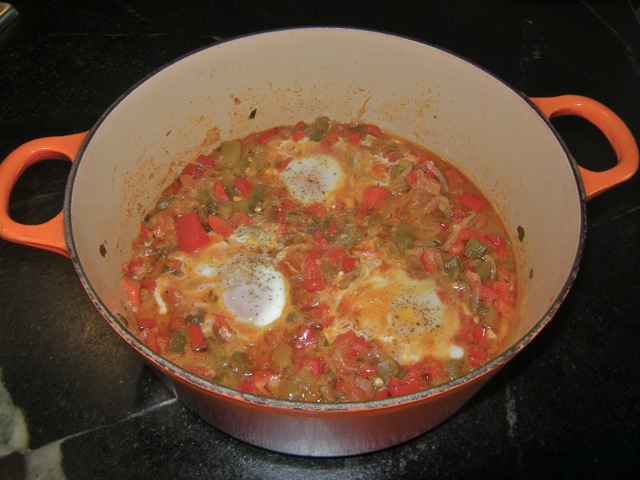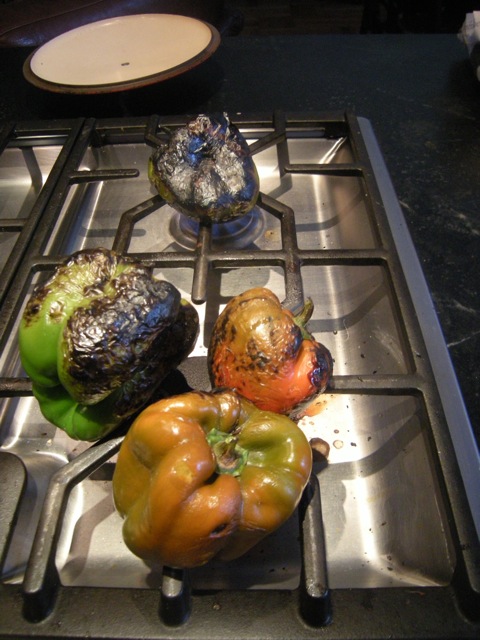I am getting the hang of cooking low glycemic index meals —more on that coming up, since it will be the focus of my cooking for a few months. The menu featured today is my best so far. It happens to be vegetarian but I can assure you that it will satisfy even the staunchest meat eater. The delicate flavors & the filling qualities provide total satisfaction.
Fragrant Chickpeas, Veggie & Shitake Stew & Turmeric Slaw
Sauté 1/2 onion finely chopped in organic Olive Oil
add the following chopped vegetables:
2 leeks
2 celery ribs w/ tops
1 red bell pepper
2 Jerusalem artichokes
1 cup of shitake mushrooms
2 cloves of grated garlic
1 bunch of fresh coriander
1 1/2 cup of soaked & pre-cooked chickpeas (soaked over night, boiled once and let sit for one hour before use in stew)
Turmeric Slaw
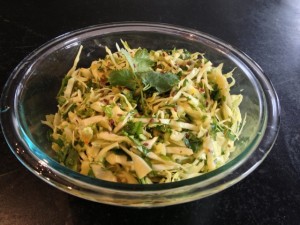
If you have read the previous post you know that I have beautiful turmeric from Hawaï. This coleslaw recipe is a low glycemic slaw variation that work quite beautifully with the Fragrant Chickpea Veggie & Shitake Stew. It is only slightly different than the one featured in Passion Cabbage.
Ingredients:
Finely chopped green cabbage/onion/celery/fennel bulb/ cilantro/
Dressing:
Fresh grated ginger / turmeric /1 clove of garlic
juice of 1 Mayer lemon
soy sauce
mostly sesame oil
a little olive oil
flax seeds
Tamarind Tofu Pudding with Minty Blueberry Purée
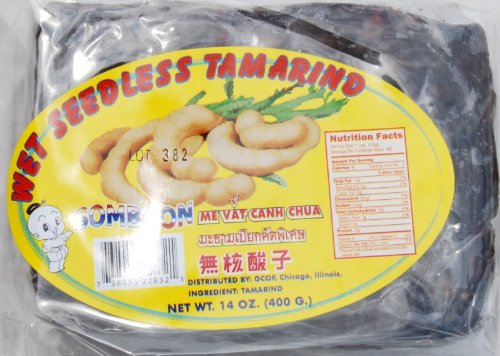
Finally a tofu pudding that is really good! I have been trying for months & at last here is one worth sharing. First I made tamarind paste with wet seedless (not totally!) tamarind. Tamarind doesn’t have a super low glycemic index but first, little is used & second, it is supposed to be very good for the liver. The process is a little tedious but worth the effort since it can be used in many other dishes —e.i: simply add to goat milk yogurt, morning cereals or to make the famous Pad Thai.
Tamarind paste process:
Soak one 14oz package in equal amount of warm water. Let it sit for a few hours. Once rehydrated work it with your hands to remove veins & seeds. Blend in food processor until smooth; keep in a glass jar in the fridge. For our purpose you will need only one or two tablespoons.
Pudding:
Put the desired amount of tamarind in a small pan, add a little water, heat to medium heat & add 1/2 package of plain gelatine; let it sit.
Meanwhile, in the food processor add:
1 package of organic silken tofu (1lb)
1 sunlime juice (this is a new kind of lemon that appeared at the ParkSlope foodcoop, if you don’t find it mix lemon & lime juice . The sunlime looks and tastes like an hybrid of the 2)
Freshly ground cinnamon & nutmeg
Few drops of stevia (careful — too much gives it a terrible taste)
Add the tamarind mixture to the tofu mixture and blend thoroughly.
Pour in glass ramequin & let it set in the fridge for a couple of hours.
Serve with fresh blueberry mint puree (blend fresh blueberry & fresh mint in food processor, strain and pour over the set pudding)
Bon appetit & keep healthy!


